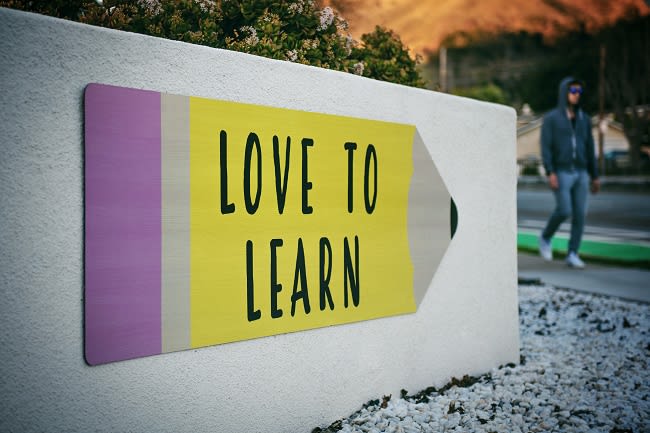7 Types of Assessment for Improving the Learning Process
Anyone who has been through school has most likely experienced the seven types of assessments for improving the learning process. The pre-tests educators used to give out at the start of every semester, term papers, portfolios, and exams, are a few examples of assessments you’ve gone through in your school years.
School isn’t exactly the same as it was back then. For example, students have new digital learning tools to explore. However, using these technologies in the classroom doesn’t always guarantee effective learning. Even today, one of the most effective processes in learning is assessment. It might not be new, but it’s still quite effective.
Unfortunately, for many students assessments have a negative connotation. For it to have an impact on learning, you must make sure to address that problem first. If not handled properly, the stress will inhibit their ability to learn.
In this guide, we go into detail about the assessment process. We define what it is and what it isn’t. We also cover seven types of assessment that improve the learning and teaching process.
Create an Assessment in Minutes
Create an AssessmentWhat Is an Assessment?
Assessments refer to a wide array of methods and processes that enhance student learning. They can focus on an individual learner or an entire class of students. Either way, they should contribute to ongoing learning.

To make that possible, assessments should provide insights into students’ learning needs. They should help you recognize what your students need to learn next. In addition, they must identify areas for growth. Assessment results allow you to design teaching programs that challenge your students’ capabilities. In turn, you can help your students gain new knowledge and skills.
People often confuse testing with assessments. Although both enable educators to measure their students’ performance, they serve different functions. Test results only give insights into students’ performance. Since they can’t provide insights into students’ learning needs, tests alone can’t improve teaching programs. Assessments, on the other hand, can do all that and more.
In recent years, it has also become much easier to independently develop online assessments that students can enjoy and learn from. For example, a teacher could easily use a poll maker to create interactive polls or a quiz maker to design fun quizzes that are both engaging for students and informative for teachers. If you’re using digital platforms like Google Classroom, a Google Classroom poll is a quick, effective way to gather student feedback or kick off class discussions.
The Purpose of Assessments
Assessments are critical to the success of our educational systems. They can be used as evaluation systems for the individual. Often, they are also used to compare students’ performance against other populations. With several kinds of assessments available, it’s hard to keep track of their functions.
So, what are all these types of assessments for?

Driving instruction
Pre-tests, as well as needs assessments, show educators what students know and what they have yet to learn. When done well, educators can use their assessment data to refine their methods and address students’ needs.
Encouraging learning
Some types of assessments drive students’ motivation for learning. These assessments show students what and how they should learn. They can also determine the ideal time students should spend learning new concepts or skills in a program. To encourage learning, you can choose the right form of assessment where students can redirect their energies.
Improving teaching methods
Another important function of an assessment is to enhance your teaching strategies. Gathering feedback from students about your methods of instruction allows you to identify opportunities for growth. Apart from this, it shows you how to improve your methods.
Informing students of their learning progress
Effective assessments promote better self-awareness. They encourage students to identify their strengths and recognize their weaknesses. Through constructive feedback, students can be more prepared for the challenges to come. Moreover, it motivates them to achieve learning outcomes. Without assessments, there’s no way of knowing if students actually learn from their lessons or if their understanding of them has progressed.
Principles of Assessment
There are different types of assessments in education. Regardless of their purpose and form, all assessments must meet a set of principles. They must meet educational standards, as well as students’ objectives. When you adhere to all of these phases, you can complete the final step in the process. Then, you can do it all over again.

Valid
For an assessment to be valid, it must meet all the criteria and learning outcomes. It should measure what it’s supposed to measure. For instance, if you intend to determine students’ problem-solving skills, you should avoid the types of assessment involving fact recall because they aren’t relevant to your goal.
Reliable
Reliability ensures the consistency of the assessment data. If the process is replicated, it should meet the same outcomes. To do this, you must establish clear and consistent methods for setting, marking, or grading learning activities.
Transparent
Transparency is also important in assessments. Clear and consistent assessment data should be available to students, educators, and other assessors who wish to review them.
Fair
Assessments should be fair to every student. Hence, they shouldn’t restrict a group or an individual from accomplishing the necessary learning activities.
Manageable
The methods you use shouldn’t interfere with the learning process. In short, they should be manageable. Thus, make sure all of the assessment tasks set reasonable demands on your students.
Building Confidence
One of your primary tasks as an educator is to make sure all the learners feel comfortable about being assessed. Since assessments are often equated with tests, they may cause some fear and anxiety. But if you let them understand the benefits of this whole process, they might slowly get past that.
Talk about the types of assessment
Talk to your students about what an assessment is and why it matters. Aside from that, you should let your students understand how you’re going to assess them and what criteria you’re going to use. By getting them comfortable and familiar with the process, they should get over that fear and anxiety.
Motivate them
You have a very important role in building motivation as well. By showing them that you genuinely want to contribute to their growth, they will consequently feel motivated to do better.
Give constructive feedback
After interpreting the assessment results, you can give constructive feedback to help your students grow. You can also go over the problem again to make sure they understand everything. Once they see their progress, they’ll understand how beneficial assessments are to their growth.
Create Your Own Online Assessment
Create an AssessmentThe Assessment Cycle
A good assessment process should be a constant cycle of improvement. It consists of four simple yet necessary phases, which you must adhere to. In doing so, you can establish an assessment cycle that delivers continuous improvement to student learning.

Goal identification
What do your students need to learn? That’s what you need to ask yourself at this point. Before anything else, you need to articulate your goals for student learning. In other words, you should establish what your students should be able to know or do after completing the class. Aside from setting clear outcomes, you must make sure they are measurable.
Design and implementation
How can you improve your teaching? Assessment data reflects what students learn, not what they are taught. However, in the development stage, your primary concern is effective teaching. Thus, you must design activities that help students achieve the objectives you set in the planning phase. Not only that, you must ensure that these learning activities produce the assessment data required for the following phase.
Review of assessment information
Have you met your learning outcomes? Check all of the activities students had to complete to fulfill your course or certification program requirements. By doing so, you can find out if students accomplished the learning objectives you established. You can also determine the extent of their achievement.
Development of an action plan
What should you do with your insights? The assessment process is worthless if you don’t interpret the results. Aside from that, if your outcomes don’t show improvements or adjustments, that means your assessment process failed. But don’t worry. As long as you gathered and reviewed sufficient data, you can come up with a clear plan and a set of action items. Thus, you can enhance student learning.
Types of Assessment in Education
There are several types of assessments in education. Each one comes with a unique set of methods and serves different purposes.

1. Diagnostic assessment
Diagnostic assessments let you understand your students’ academic readiness and learning needs. That is, their strengths and weaknesses. You identify their current knowledge of a certain subject so you can figure out what to teach and how to teach it.
Diagnostic assessment examples
- Pre-tests
- Self-assessments
- Interviews
2. Formative assessment
According to Carnegie Mellon University’s formative assessment definition, its goal is to monitor student progress. You can use the results to deliver effective feedback that improves students’ learning, as well as your teaching. You can also use formative assessments to identify problem areas and address them immediately.
Formative assessment examples
- Homework assignments for exam reviews
- Student feedback
3. Summative assessment
Unlike formative assessments, summative assessments focus on the final product itself instead of the journey. Therefore, you must conduct summative assessments at the end of a semester. They let you grasp what students have learned and how well they’ve learned it.
Summative assessment examples
- High-stakes exams
- Term papers
4. Confirmative assessment
Even after you implement your instructions, you still need to conduct assessments to achieve continuous performance improvement. A confirmative assessment ensures the success of your instructions year after year.
Confirmative assessment examples
- High-stakes exams
- Term papers
5. Norm-referenced assessment
Through norm-referenced assessments, you can determine students’ proficiency by comparing it with local, state, or national standards.
Norm-referenced assessment examples
- Comparing students’ average grade with the national average
- Comparing students’ average grade with the state average
6. Criterion-referenced assessment
In a criterion-referenced assessment, a student’s performance is measured against a specific goal or fixed set of learning standards. They are meant to evaluate a student’s level of knowledge or skills about a particular topic.
Criterion-referenced assessment examples
- Advanced placement exams
- National assessment of educational progress
7. Ipsative assessment
Using this process, you assess a student’s performance by comparing it to their previous results. Ipsative assessments support effort-based attributions. Their primary goal is to motivate students to learn.
Ipsative assessment examples
- Comparing students’ current performance with their best work
- Comparing students’ current performance with their previous performance
The Impact of the Different Types of Assessments
Indeed, the impact of assessment on educational improvement is a matter of debate. But it goes without saying that these assessments can establish the levels of acceptable performance for students. Not to mention, they motivate educators to refine their practices and decision-makers to modify policies.

School and system accountability
School districts use their own assessment methods to measure the success of their own programs against national standards or to monitor individual student learning.
If you align all these different types of assessment with learning goals, you can welcome change at all levels of the education system. The combination gives educators a clear direction. Furthermore, it could serve as a catalyst for positive instructional or curricular change.
Teacher evaluation
As mentioned, student assessment is crucial to the learning and teaching process. By linking student performance with learning objectives, you can measure the effectiveness of your teaching methods and refine them to enhance your students’ growth.
Students’ active involvement in their own learning
Students can finally take an active part in their own learning because of assessments. They drive self-awareness and appropriate learning. That’s what happens when an assessment is well-planned and aligned with the objectives. By looking into the assessment results, students can work on achieving the intended outcomes.
To support this kind of engagement, many educators use eLearning software to design interactive educational materials, like quizzes, videos, and gamified experiences, that help students learn in more personalized and effective ways.
College admission
Some forms of assessment help students and teachers pave the way for a better future. That is, they help you get into a good school. For instance, achieving higher marks on your SATs or ACTs will get you into top universities. Other important types of assessment that influence college admission are placement tests, which are administered by a university or a college.
Online Assessment
Thanks to technology, evaluators can move away from the traditional pen and paper method to a more efficient and accurate method—online assessments.
Educational systems, as well as companies, can save a whole lot of resources by making the transition. You don’t have to hire a psychologist or other skilled personnel to supervise the assessment. Multiple students or trainees can also take the assessment at the same time. As a result, you can gather all the required data faster without any hassle.
Of course, all the benefits of an online assessment depends on a number of factors: the participants, the organization conducting the exam, and the assessment platform used.
Opinion Stage, for example, is an interactive content creation platform where you can design your assessments from scratch or choose from their many engaging templates. More importantly, the platform lets you collect assessment data with ease, allowing you to evaluate the results and monitor performance improvement.
Create Your Own Online Assessment
Create an AssessmentConclusion
Much like how learning is a lifelong process, assessment is a continuous process. It can help you determine the effectiveness of your teaching methods. Using different forms of assessment, you can even monitor students’ progress.
Before all of that, you must choose between the seven types of assessment. Instead of weighing their benefits, you should select assessments that match your goals and objectives. Then, you must implement them throughout the learning process. If, for example, students have a grammar problem, you can go over that lesson again and make sure everything is clear.
Seeing that you value their growth more than their scores, your students might slowly get rid of their anxiety. Thus, your assessments can leave a more meaningful impact and positive change.
In conclusion, an assessment is a complex yet fundamental part of education. To promote growth and learning, you should invest your time and effort into understanding this process.



